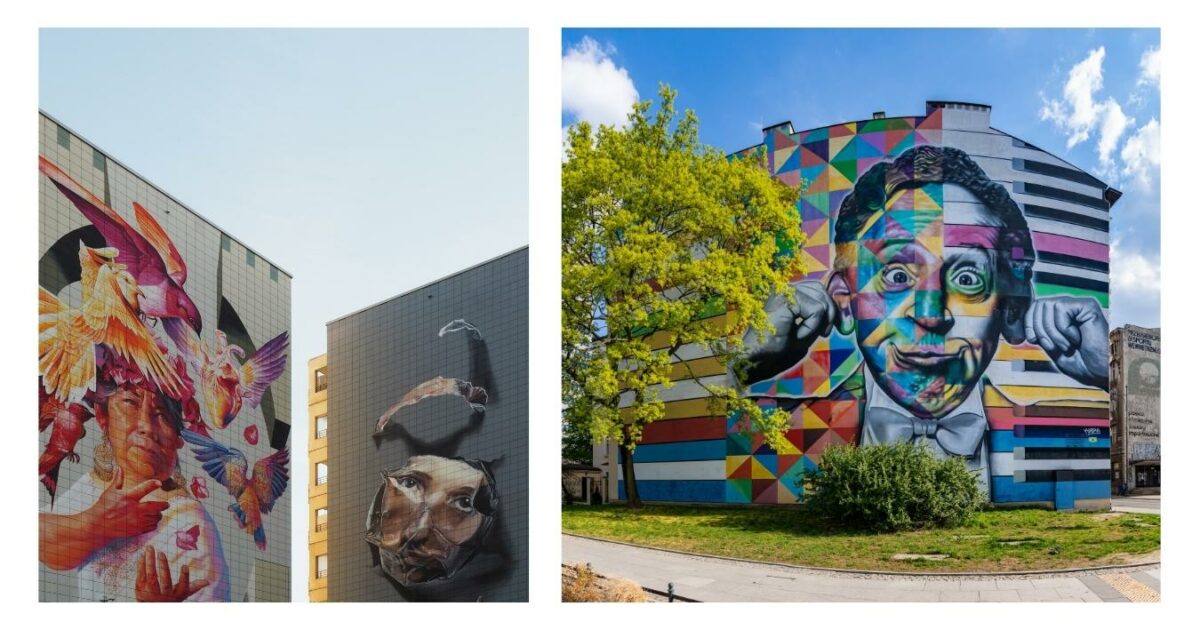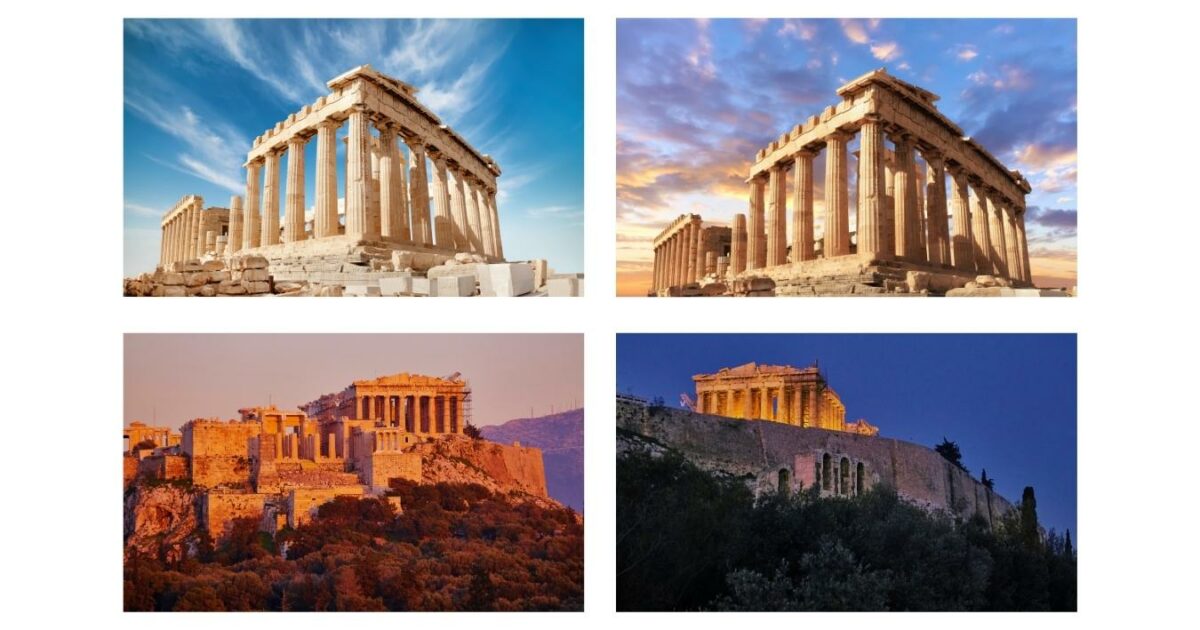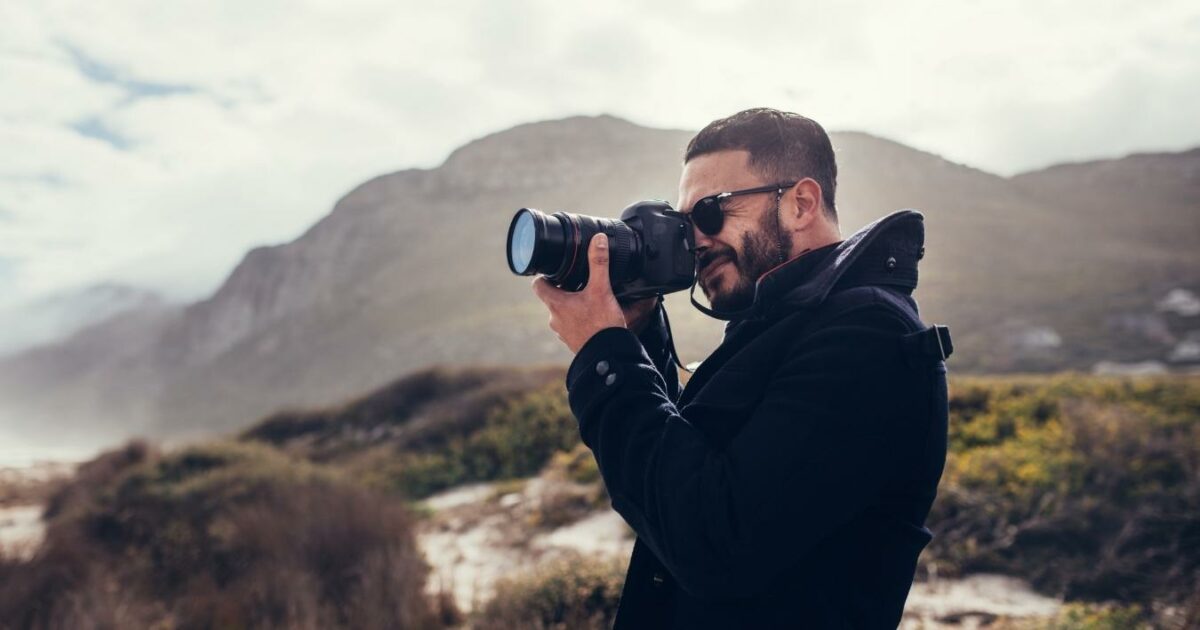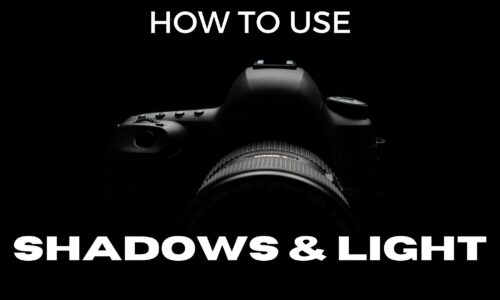What is a Photo Essay in Photography (13 Examples You Can Try)
Do you know what a photo essay is?
If not, that’s okay. Many photographers aren’t even familiar with the term. I didn’t know until a few years back myself after doing many of them unknowingly.
A photo essay is an interesting form of visual storytelling that presents a narrative through a series of images.
Powerful photo essays communicate emotions and understanding without using words.
You’re guiding the viewer through your narrative journey.
In this article, I’ll be going over the important parts of a great photo essay idea, 13 interesting photo essay ideas you can try, and a few photo essay tips.

What is a Photo Essay?
A photo essay is a powerful form of visual storytelling in which a narrative is presented through a series of images.
Unlike a written essay, a photo essay relies on visuals to tell a story and evoke emotions within the viewer. When you create a photo essay, you can stretch your creative limits and explore new ways of connecting with your audience.
In a photo story or essay, the images are carefully selected.
They’re arranged in order to create a coherent and engaging narrative.
Each photograph should contribute to the overall theme of the story and maintain visual and technical consistency throughout.

As the photographer, you play a big role in coming up with interesting photo essay ideas, the narrative, and providing context for the images.
To create a good photo essay, here are a few guidelines:
Choose a Strong Theme: Select a subject that resonates with your audience and communicates a clear message or emotion.
Curate the Images: Carefully select the photographs that best represent your theme and arrange them logically.
Maintain Consistency: Your images should have a consistent visual style, color palette, and framing. You want to create a cohesive narrative.
Provide Context: Include captions or short text descriptions to give the viewer a better understanding of the story being told.
Other Important Elements of a Photo Essay
These other components help provide a clear narrative and evoke emotions that keep the audience engaged in your story.
Storytelling: The primary purpose of a photo essay is to tell a story through your images. You must carefully choose your photos to convey a coherent and interesting narrative. The flow of your images should guide the viewer through your perspective or various viewpoints on the subject.
Emotion: A strong photo essay evokes emotions that resonate with the viewer. As you select your photos, consider how they touch the viewer emotionally. The emotions your images evoke can differ, ranging from happiness and love to fear and sadness.
Idea: Your photo essay idea should revolve around a central idea or theme. This foundation not only provides direction for your work but also ensures your images remain focused and relevant. Before starting your photo essay, you need a well-defined idea that’ll guide your photography and narrative.
Style: For your photo essay to be visually cohesive you need a consistent style. This can include using a particular color palette, choosing images with a distinct composition, or using a specific technique in each photo. As you curate your images, make sure they’re consistent in their visual qualities to create a harmonious presentation.
Composition: The composition of each photo plays a significant role in guiding the viewer’s eye within the image. Pay attention to elements like leading lines, patterns, and framing.
Technique: Using specific photography techniques can create a unique style for your photo essay. Experiment with different techniques like long exposures, shallow depth of field, and post-processing methods. Doing so will enhance the visual impact of your images.
Why Create a Photo Essay
Creating a photo essay allows you to merge your passion for photography with the art of storytelling.
By focusing on a specific narrative, you have a purpose and direction while capturing images. This can lead to a deeper connection with your subject and inspiration to create an interesting visual story.
And as a photographer, you can use photo stories to experiment with various styles, techniques, and compositions.
This not only challenges your creativity but also helps improve your skills as a photographer. The process encourages you to explore new perspectives and angles while conveying your message.
The images you choose can make people feel happy, sad, or even angry. By doing so, you harness the power of visuals to communicate a message beyond words.
Photo essays also serve as an opportunity for reflection.
By picking a topic or theme close to your heart, you can ponder, look back, analyze, and dive deeper into a subject matter. It can be a powerful tool for personal growth and self-expression, allowing you to learn more about your own emotions and perceptions.
This is valuable if you intend to share your photography with a wider audience.
You can use a photo essay to show your skills in composition, storytelling, and emotional impact, making it a powerful way to gain recognition.
13 Photo Essay Examples
There are so many great photo essay examples, and I might try all of them myself!
But here are 13 not-too-hard photo essay ideas you can try.
1. Local Event Photo Essay
This is one of the most popular photo essay examples. You’re capturing the joy of local events by focusing on the participants’ emotions and interactions.

Doing so shows the diversity of the people and the range of activities taking place. From stall setups to exciting performances. Document memorable moments and unique aspects of the event that make it stand out.
2. A Day in the Life Photo Essay
Highlight a typical day in the life of a person, family, or community.

This photographic essay gives you an opportunity to capture the reality of daily life and routines. Focus on the small moments that give insight into the subject’s personality and relationships.
3. Transformation Photo Essay
Transformation photo essay topics are popular. This photo essay project showcases the power of change through photographs that depict the transformation of a person, place, or object. Include before and after pictures.

You want shots with angles and perspectives that show change and development. One of the most common transformation photo essay examples is weight loss before and after.
4. Family Photo Essay
Tell the story of a family’s life together by capturing candid moments, daily routines, and special occasions.

Focus on the relationships between family members and the unique characteristics that make them a cohesive unit.
5. Education Photo Essay
An educational photo essay shows the educational process in action by documenting classes, workshops, or seminars.

You can capture students’ learning and applying new skills. Observe interactions between teachers and students. Or show off diverse educational settings, from schools to informal learning environments.
6. Urban Renewal Photo Essay Examples
Explore the renewal of urban spaces with your photography.

Take pictures as the city improves, new developments go up, and the impact it has on local communities. Include images of old and new architecture, as well as scenes that feature revitalization efforts.
7. The Changing Seasons of a Park Photo Essay
Make a transformation essay showing the changing seasons in a park. With this photo story, you want to capture the elements of the atmosphere that make each season of the year unique.

Highlight the features and activities that define each season, from the colors of the leaves to the snow-covered landscapes.
Bonus points if you can shoot the same shot for each photo!
8. City Artwork and Murals Photo Essay

Another great photo essay example is celebrating the urban art scene by showcasing striking murals and street art found in cities and towns. Take photos that show the diverse styles, colors, and messages conveyed by the artists.
9. Historic Landmarks: Then and Now Photo Essay

Compare historic landmarks and sites in their current state with photographs from the past. This photo essay can show the changes and preservation efforts of these important cultural and historical places.
10. Coffee Shop Chronicles
Photograph coffee shops or the unique atmosphere of your favorite local coffee shop. Then document with your essay the diverse customers, staff members, and aesthetic elements that make it special.

Focus on the details that give it character and the emotions it evokes in visitors and customers.
11. Through The Lens of a Photographer
Be a photographer for another photographer and provide insight into their creative process. It can be a friend, another professional photographer, or even someone you want to learn from.

You can showcase their work, techniques, and equipment with your photo story. Include behind-the-scenes shots of the photographer in action, as well as their perspective on their craft.
12. Recipes From Your Favorite Local Restaurant
Do a photo shoot and partner with a local restaurant to create a visually appealing photo essay featuring their signature dishes.

You can include photographs of the cooking process, finished plates, and behind-the-scenes shots of the kitchen and staff.
13. Behind The Scenes Photo Essay
Offer a glimpse into the hidden aspects of various locations, professions, or events. Capture the unseen scenes and the people who make them happen by providing a unique and rarely seen perspective.

Tips for Creating Your Own Photo Essay
Choose Something You Love: Do something that sparks emotion in you and others. Tell a story that’s personal and meaningful to you. Whether it’s a social issue, an event, or a day in the life of a specific person, make it a subject you love.
Develop Your Own Style: Your unique photography style plays a role in keeping your audience engaged. And having a signature style can help you carve out a niche for yourself. This will attract clients who appreciate and seek your unique perspective.
Plan Your Shots: Photo essays are like storytelling, so take time to compose and plan out each image carefully. Each photo communicates an essential part of your story. Without a story, there’s nothing to captivate your viewers.
Keep The Story Cohesive: Maintain a clear narrative throughout your photo essays. Each image contributes to the story’s flow. So, organize your photos logically for effective communication of your message.
The Power of Sequence: Plotting the Narrative Arc for Your Photo Essay
Just like a traditional narrative, your photo essay should have a beginning, middle, and end.
The opening image sets the stage and draws your audience in. It’s similar to the hook in written storytelling.
As you progress towards the middle of your essay, develop your theme or subject further. This may involve using contrasting images or presenting different aspects of your topic to maintain viewer interest. And finally, end with an impactful image that leaves a lasting impression or delivers a powerful message.
View these steps as the equivalent of crafting plot points in written narratives:
Beginning: Set up your story.
Middle: Develop the main characters or themes.
End: Resolve any conflicts or deliver the final message.
Linking Images Together: The Art of Transitions in Photo Stories
Transitions are super important.
They’re key elements that string individual photos together. Photo essay transitions are like the transitions between paragraphs in writing. They help maintain flow and continuity.
A transition might be thematic, such as moving from color-filled scenes. Or black-and-white images to represent shifting moods or timescales.

It might even be visual: you can focus on common shapes, patterns, or subjects across several photographs.
To create effective photo transitions:
Identify common themes between photos.
Look for similarities in colors, textures, shapes, and lighting.
Experiment with gradually shifting the mood of your photos too.
How to Create a Photo Essay in 7 Steps
Step 1: Choose a Topic
Select an engaging topic for your photo essay.
Reflect on your interests, the emotions you want to evoke, and the story you want your landmark photo essay to tell. Topics can range from personal stories to cultural explorations or even school events. You want an angle and style that will make your essay stand out and resonate with your audience.
Step 2: Research Beforehand
Before shooting, conduct research on your chosen topic. Gather information and familiarize yourself with the theme, people, and culture involved. This will help you capture consistent and authentic images. And provide depth to your photo essay project.
Step 3: Capture a Wide Variety of Images
Experiment with different shooting techniques, angles, and perspectives. Photograph various images that reflect your subject’s emotions, moods, and environment. Cover every aspect of your story. And remember, quality shots are more important than quantity.
Step 4: Create a Storyboard With Your Ideas and Images
After shooting, review your images and develop a storyboard. Arrange the photos in a manner that portrays your story effectively. Consider composition, techniques, and the flow of your narrative.
Step 5: Narrow Down, Edit, and Organize Your Photos to Tell a Story
Select the images that best illustrate your story, and edit them for style and consistency. Then organize your images in a sequence that connects with your audience emotionally. And make sure your photo essay is visually appealing and reflects the essence of your topic.
Step 6: Use Captions for Your Images as Needed
Captions can help tell your story without overwhelming your audience with text. So, if necessary, include captions to provide context and explain your images. But keep them short, concise, and informative.
Step 7: Ask for Feedback
Before publishing your photo essays, ask for feedback from friends, family, mentors, or even strangers. Then listen to their insights and suggestions, and make adjustments as needed. Getting a variety of perspectives can help ensure your photo essay is engaging, clear, and relatable to your audience.
The Importance of Photo Essays in Photography
Photo Essays Tell an Intriguing Story
We’ve all heard the phrase, “A picture is worth a thousand words.”
But have you ever thought about how true this statement is?
When photographs are thoughtfully grouped together, they can weave a captivating narrative. A photo essay allows you to explore subjects deeply and from various angles, telling stories that may not be possible with just one image.
For instance, highlighting the daily life of a particular subject.
Or showcasing the transformation of an abandoned building into a vibrant community center. These narratives become more profound and interesting when illustrated not just through words but through the lens of a camera.
Photo Essays Can Connect With an Audience
They’re powerful tools for connecting on an emotional level with your audience.
They allow viewers to walk in someone else’s shoes, experiencing situations and emotions that might be entirely different from their own lives.
For example, a well-executed photo essay on local environmental pollution could stir up feelings of concern and urge viewers to take action.
A Good Photo Essay Can Market Your Products or Services
Photo essays offer businesses a unique way to promote products and services in a visual world.
But you aren’t simply showing off your offerings. Instead, you’re telling engaging stories around them. These stories make it easier for potential customers to relate and respond positively.
Take Airbnb as an example.
They’re pairing photos of hosts’ homes with local attractions or experiences to create mini-photo-essays. Potential customers feel like they’re getting a sneak peek at their vacation experience.
Can Convey a Wide Range of Emotions
One image may evoke joy. While another stirs up sadness.
By grouping these images together, a photo essay lets you create an emotional rollercoaster for your viewers. You’re not just showing them what’s happening—you’re making them feel it.
Consider a photo essay documenting the journey of a cancer survivor. From the initial shock and fear to the strength found in treatment, and finally, the joy of remission.
Such a powerful narrative can touch hearts and inspire action like no other medium can.
They Bring Life to an Otherwise Ordinary Collection of Photos
A random assortment of photographs might be visually appealing, but without context or purpose, they may lack depth or meaning.
That’s where photo stories come into play.
They provide structure to these collections, turning them into interesting narratives. Ones with clear themes and messages.
Imagine a series of seemingly unrelated photos—portraits of people from different walks of life.
When presented as part of a photo essay that explores societal diversity within cities, these portraits become more than just faces. They turn into symbols of unity and diversity.





